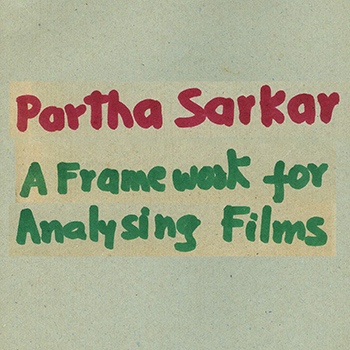In an essay from 1945, Eisenstein described three levels at which films could be looked at. A long-shot film theory looked at films in order to unravel their political and social implications. The medium-shot film theory focuses on the human scale of the film—its story, its characters, its drama, etc.—while the close-up film theory breaks down a film into its elements and takes a close look at them in order to reveal their contribution to the overall film. Most analysts look at films from the first and second viewpoints; what is ignored is the close-up view, a view that could reveal to us how cinematic variables like editing, sound, light, lenses, camera movements, framing, colours, etc. are being used in harmony to create moods, ambiences, and an expressive power that is purely cinematic. As a consequence, an analysis of Tagore's NASHTANEER and Ray's CHARULATA (Ray's film version of NASHTA-NEER) would have the same tonal values. The reason seems clear: most analysts come from a literary tradition and extend a methodology for literary analysis onto films.
With the growth of semiotics as an important discipline, this is remedied, as semiotics is the study of signs, and with the sign systems for cinema and literature being different, analysis specific to the medium produces different results.
This paper, then, is an attempt to integrate the above-mentioned views and further develop an elaborate framework for looking at Indian films. Mirch Masala is being used as a vehicle for developing this framework. There are a number of reasons for this choice. MIRCH MASALA has been funded by the N.F.D.C. and has been a fair commercial success, though its success is partly due to the TAX FREE' status that it enjoyed. The film uses a lot of commercial idioms and yet maintains a distance from the regular commercial outpourings. Thirdly, Ketan Mehta, the film's director, claims to be politically conscious (CINEMA IN INDIA, Vol. 1), and hence would be conscious of the political implications of the choices that he would be making in the design of the film. And finally, a close-up view does reveal a conscious selection of cinematic variables and their appropriate usage within a framework of classicism.
